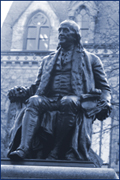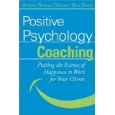The Oxford Happiness Questionnaire was developed by psychologists Michael Argyle and Peter Hills at Oxford University. Take a few moments to take the survey. This is a good way to get a snapshot of your current level of happiness. You can even use your score to compare to your happiness level at some point in the future by taking the survey again. If you are using some of the interventions presented on this site to raise your happiness level, you can see whether your score on the Oxford Happiness Questionnaire goes up as a result.
Instructions
Below are a number of statements about happiness. Please indicate how much you agree or disagree with each by entering a number in the blank after each statement, according to the following scale:
1 = strongly disagree
2 = moderately disagree
3 = slightly disagree
4 = slightly agree
5 = moderately agree
6 = strongly agree
Please read the statements carefully, because some are phrased positively and others negatively. Don’t take too long over individual questions; there are no “right” or “wrong” answers (and no trick questions). The first answer that comes into your head is probably the right one for you. If you find some of the questions difficult, please give the answer that is true for you in general or for most of the time.
The Questionnaire
1. I don’t feel particularly pleased with the way I am. (R) _____
2. I am intensely interested in other people. _____
3. I feel that life is very rewarding. _____
4. I have very warm feelings towards almost everyone. _____
5. I rarely wake up feeling rested. (R) _____
6. I am not particularly optimistic about the future. (R) _____
7. I find most things amusing. _____
8. I am always committed and involved. _____
9. Life is good. _____
10. I do not think that the world is a good place. (R) _____
11. I laugh a lot. _____
12. I am well satisfied about everything in my life. _____
13. I don’t think I look attractive. (R) _____
14. There is a gap between what I would like to do and what I have done. (R) _____
15. I am very happy. _____
16. I find beauty in some things. _____
17. I always have a cheerful effect on others. _____
18. I can fit in (find time for) everything I want to. _____
19. I feel that I am not especially in control of my life. (R) _____
20. I feel able to take anything on. _____
21. I feel fully mentally alert. _____
22. I often experience joy and elation. _____
23. I don’t find it easy to make decisions. (R) _____
24. I don’t have a particular sense of meaning and purpose in my life. (R) _____
25. I feel I have a great deal of energy. _____
26. I usually have a good influence on events. _____
27. I don’t have fun with other people. (R) _____
28. I don’t feel particularly healthy. (R) _____
29. I don’t have particularly happy memories of the past. (R) _____
Calculate your score
Step 1. Items marked (R) should be scored in reverse:
If you gave yourself a “1,” cross it out and change it to a “6.”
Change “2” to a “5”
Change “3” to a “4”
Change “4” to a “3”
Change “5” to a “2”
Change “6” to a “1”
Step 2. Add the numbers for all 29 questions. (Use the converted numbers for the 12 items that are reverse scored.)
Step 3. Divide by 29. So your happiness score = the total (from step 2) divided by 29.
I recommend you record your score and the date. Then you’ll have the option to compare your score now with your score at a later date. This can be especially helpful if you are trying some of the exercises, and actively working on increasing your happiness.
UPDATE: A lot of people have been asking for some kind of interpretation of the raw number “happiness score” you get in step 3 above. What follows is just off the top of my head, but it’s based in part on the fact that the average person gets a score of about 4.
INTERPRETATION OF SCORE
I suggest you read all the entries below regardless of what score you got, because I think there’s valuable information here for everyone.
1-2 : Not happy. If you answered honestly and got a very low score, you’re probably seeing yourself and your situation as worse than it really is. I recommend taking the Depression Symptoms test (CES-D Questionnaire) at the University of Pennsylvania’s “Authentic Happiness” Testing Center. You’ll have to register, but this is beneficial because there are a lot of good tests there and you can re-take them later and compare your scores.
2-3 : Somewhat unhappy. Try some of the exercises on this site like the Gratitude Journal & Gratitude Lists, or the Gratitude Visit; or take a look at the “Authentic Happiness” site mentioned immediately above.
3-4 : Not particularly happy or unhappy. A score of 3.5 would be an exact numerical average of happy and unhappy responses. Some of the exercises mentioned just above have been tested in scientific studies and have been shown to make people lastingly happier.
4 : Somewhat happy or moderately happy. Satisfied. This is what the average person scores.
4-5 : Rather happy; pretty happy. Check other score ranges for some of my suggestions.
5-6 : Very happy. Being happy has more benefits than just feeling good. It’s correlated with benefits like health, better marriages, and attaining your goals. Check back – I’ll be writing a post about this topic soon.
6 : Too happy. Yes, you read that right. Recent research seems to show that there’s an optimal level of happiness for things like doing well at work or school, or for being healthy, and that being “too happy” may be associated with lower levels of such things.
Reference
Hills, P., & Argyle, M. (2002). The Oxford Happiness Questionnaire: a compact scale for the measurement of psychological well-being. Personality and Individual Differences, 33, 1073–1082.
I’ve used “don’t” rather than the more staid and formal “do not” in the phrasing of the questions above; I decided to give preference to my own sense of what is more natural and conversational in American English. (Remember that the questionnaire was developed in England.) I’ve also added the phrase “(find time for),” which psychology researcher Sonja Lyubomirsky uses for clarification in question 18.
—
Note: Michael Argyle died in 2002. If you would like to contact Peter Hills, you can email him at p_r_hills “AT” hotmail “DOT” com (seems to be outdated) or contact him by telephone/fax in the UK: Tel.: +44-1235-521-077; fax: +44-1235-520-067.
—
There is a problem with the comments below. None of the early comments are showing up since an upgrade a few days ago. Here’s one example, a comment from me:
The highest score you can get on an item is a 6, and the lowest a 1. If you add up all your scores and divide by the number of questions (29 questions), you’d get an average score for all the questions. The highest possible average would be 6, the lowest possible would be 1. Right in the middle would be 3.5, so you might think that’s what the average person would get, but this is just a raw score. In fact, other studies show that people are generally somewhat happy on average. So it may not be surprising to hear that the average score on the Oxford Happiness Questionnaire is right around a 4, which is essentially what you got (since you got 3.9 out of 6).
Rather than compare yourself to other people, it’s probably more meaningful to compare your score now to your score later, and see if there’s a change. Some of the exercises on this site have been shown in scientific studies to make a lasting, positive impact on happiness. You might want to try some of them (I’ll be adding more), and see if they work for you. A few gratitude exercises are already on the site:
![[Circle]](http://www.meaningandhappiness.com/pictures/GoldCircle36i.png)

 You might remember the character played by Molly Shannon on Saturday Night Live, licensed joyologist Helen Madden. What you might not know is now you can get a professional graduate degree from an Ivy League university studying a curriculum based on research on happiness. This is not some single course with what sounds like a crackpot title you occasionally hear about in news reports. It’s a respected masters degree based on peer-reviewed science by leading researchers.
You might remember the character played by Molly Shannon on Saturday Night Live, licensed joyologist Helen Madden. What you might not know is now you can get a professional graduate degree from an Ivy League university studying a curriculum based on research on happiness. This is not some single course with what sounds like a crackpot title you occasionally hear about in news reports. It’s a respected masters degree based on peer-reviewed science by leading researchers. “Positive Psychology” is an expansion of psychology’s focus beyond a disease model, to understand how normal people can be happier, how individuals and communities can thrive. Professor Martin Seligman is a former president of the
“Positive Psychology” is an expansion of psychology’s focus beyond a disease model, to understand how normal people can be happier, how individuals and communities can thrive. Professor Martin Seligman is a former president of the 
